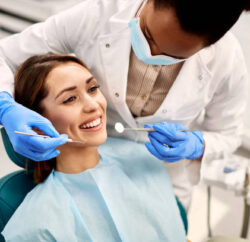A Comprehensive Guide to Safeguarding Athletic Well-Being
Engaging in sports comes with its fair share of exhilaration and, at times, the risk of injuries. Whether you’re an avid athlete or a weekend warrior, having a solid understanding of first aid for sports injuries is essential. This guide covers both prevention strategies and effective treatments to ensure the well-being of athletes.
Prevention Strategies: Guarding Against Injuries
Proper Warm-Up and Stretching: Priming the Body
Before diving into intense physical activity, it’s crucial to prepare the body with a thorough warm-up and stretching routine. This helps increase blood flow to the muscles, enhance flexibility, and reduce the risk of strains and sprains. Allocate sufficient time for dynamic stretches and specific movements related to your sport.
Appropriate Equipment: The Right Gear Matters
Wearing the appropriate sports gear is a fundamental aspect of injury prevention. Whether it’s helmets, pads, shoes, or other protective equipment, ensure that everything fits properly and is in good condition. Well-fitted gear provides the necessary support and reduces the risk of impact-related injuries.
First aid is the initial assistance for injuries. Learn vital skills to administer immediate care, ensuring a timely and effective response to emergencies. Be prepared to save lives.
Conditioning and Strength Training: Building Resilience
A body that is conditioned and strong is better equipped to withstand the physical demands of sports. Incorporate regular strength training exercises that target the muscle groups relevant to your sport. This not only enhances performance but also reduces the likelihood of injuries.
Proper Technique: Mastering the Fundamentals
Ensuring that athletes use proper technique in their activities is paramount. Whether it’s the correct form for lifting weights or the right posture for running, mastering the fundamentals minimizes the risk of overuse injuries and strain on vulnerable areas of the body.
Treatment Strategies: Immediate Action for Injuries
R.I.C.E Method: Rest, Ice, Compression, Elevation
In the event of an injury, the R.I.C.E method is a go-to strategy for immediate treatment:
- Rest: Allow the injured area to rest to prevent further damage.
- Ice: Apply ice to reduce swelling and numb pain. Use a cloth or towel to protect the skin and apply for 15-20 minutes every 1-2 hours.
- Compression: Use a compression bandage to reduce swelling. Ensure it’s snug but not too tight to avoid impeding blood flow.
- Elevation: Elevate the injured area to minimize swelling. For example, if it’s a leg injury, prop the leg up on a pillow.
Over-the-Counter Pain Relievers: Managing Discomfort
Non-prescription pain relievers such as ibuprofen or acetaminophen can be effective in managing pain and reducing inflammation. However, it’s crucial to follow recommended dosages and consult with a healthcare professional if there are any concerns or if the injury is severe.
Seeking Professional Medical Attention: Knowing When to Go
While many sports injuries can be managed with first aid, it’s essential to recognize when professional medical attention is necessary. Persistent or severe pain, inability to bear weight, joint instability, or any injury affecting the head or spine requires immediate medical evaluation.
In conclusion, prioritizing first aid for sports injuries involves a proactive approach to prevention and a swift and effective response to immediate treatment. By incorporating proper warm-up routines, wearing appropriate gear, conditioning the body, and ensuring proper technique, athletes can significantly reduce the risk of injuries. Additionally, familiarizing oneself with the R.I.C.E method, using over-the-counter pain relievers judiciously, and recognizing the need for professional medical attention contribute to a comprehensive strategy for safeguarding athletic well-being.











